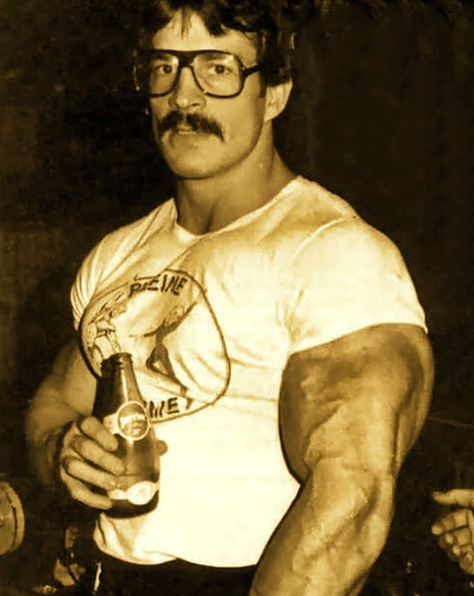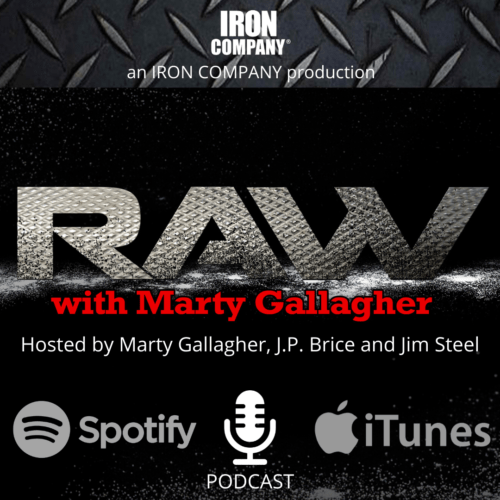
Bicep And Tricep Training
Bicep and Tricep Training - We Seek The Pump For Maximum Growth
Bruce and his father, Donald, were driving to Rebel’s Gym on Main Street talking about how to get big arms. Bruce had just turned 15 and was on a quest to get big and strong.
Ever since he had laid his eyes on Mike Mentzer’s triceps and biceps in an old 1979 Muscle/Builder/Power Magazine from his Dad’s pile of muscle magazines, Bruce has wanted big arms. He loved the way a t-shirt or even a collared shirt looked when a guy had some huge arms. His father had the arms like Bruce wanted; with veins standing out in bold relief in the biceps and forearms, with the biceps round and full and when the triceps hung off the back of the arms.
“Man, I want some big arms,” Bruce said. “You have the genetics for it,” Donald began, “But like I have told you before, genetics don’t mean a thing without hard work and discipline, two attributes that you have also. Now just add consistency, never missing a workout, and putting your time in the gym.”
“Can you tell me some shortcuts to getting big arms like you?” Bruce asked.
“One important thing that I have found out about arm training: The mind muscle connections are vital to getting them bigger.”
“But isn’t it important in all body parts?” Bruce asked.
“Yes, it is. Good point. Maybe because I never worked my arms until I started bodybuilding, I didn’t realize that in order for them to really grow, I had to get a definite connection with the biceps and triceps. I always had that connection with legs and back, but really needed to work hard and focus to get the connection with other body parts and especially with arms.”
Donald continued.
“I used to do some bicep curls, you know, but treated my biceps like my back and legs, which grew very fast. I just lifted heavy with pretty loose form and thought that they would grow. They didn’t.”
“So, you had to change your approach to training them?” Bruce asked.
“I sure did. I had to put my ego, as big as it was at the time, in my pocket,” Donald answered.
“I was in the gym one day and I was watching a top level amateur bodybuilder train his biceps. He was curling forty pound dumbbells and the man had twenty inch arms. He was lifting them under control on the way up and controlling the negative on the way down. Oh yeah, and at the top of each rep, he paused and squeezed his biceps for all they were worth. And you know what’s funny, Bruce? Even the famous Tom Platz, in a seminar I attended when I was just a kid, talked about curling thirty five pound light dumbbells and having a great workout with them, but I was too ego driven to listen back then.”
“So, you had to drop the weight down?” Bruce asked.
“When my arms were not growing, I did. I focused on squeezing the hell out of my biceps and triceps and within a few weeks, my arms looked better, bigger and more muscular too.”
“Dad, one time you told me that a close grip bench press was your favorite exercise for triceps.”
“It is. I got a lot of development out of them when I first started training. But there are other excellent triceps exercises also. Pushdowns are great. If you can, use a tricep rope and spread the rope down at your thighs and contract very hard. I also like to hold a dumbbell behind my head with two hands and do triceps extensions that way.”
“What about nose breakers?” Bruce asked. “They can be tough on the elbows,'' Donald answered. You can try them, but instead of using an ez curl bar, try dumbbells, more freedom of movement. Lie on the floor and instead of bringing them to your nose or forehead, which isn’t very safe, bring them behind your head, touch the floor lightly and extend. Never use so much weight that it bothers your elbows or forces you to turn the exercise into a press. There are machines that work well also. Give them a try. Dips are good, just don't go so deep that it hurts your shoulders. Bench dips will put too much pressure on your shoulders and I would stay away from them if I were you.”
“What about biceps?” Bruce asked.
“I like dumbbell curls. I do them seated, standing and on an incline weight bench, leaning back. I turn the dumbbells out the whole time on all dumbbell exercises. Cable curls are excellent also, with constant tension throughout the movement. Barbell curls have always bothered my wrists. The ez curl bar is a good replacement for barbell curls. But try barbell curls, some folks love them. I like preacher curls but I am careful with them. It takes the shoulder out of the movement but extending all the way down and also bouncing at the bottom of them can cause a biceps tear.”
They arrived at the gym and his father began taking Bruce through an arm session.
After a light warmup set, they began arm training with ez curls, performing 4 sets of 6. Donald was adamant about Bruce not slinging the weight up and reminded him to control the eccentric portion of the curl. Weight was added to each set, but not so much that the form was compromised. On the last set, Donald really pushed his son, and his final rep was definitely to failure. Without much rest, they moved onto two arm cable curls, with the same cadence as the ez curls, but they each did 3 sets of 15 reps. Bruce’s biceps felt as though they were on fire after those. His dad had Bruce back up with the cable in his hands until he could feel the weight pulling on his biceps, where he could feel the most tension before he began each set. The last set was taken to positive failure. Bruce's biceps were now filled with blood. He glanced in the mirror and saw that his biceps were swollen and he loved the way that they looked.
They started their triceps with pushdowns, using a rope. Just like his father had advised before, Bruce split the rope at his thighs and squeezed for all he was worth. After 4 sets of 15 reps, his triceps were as swollen as his biceps.
“One more exercise,” Donald said.
Donald walked over to the dumbbell rack and instructed his son on the proper technique for two handed dumbbell triceps extensions. He had him start by holding the dumbbell with his arms extended over his head, and then to bring the dumbbell to the bottom of his head. Donald explained to Bruce that he shouldn’t force the elbows in, but to let them travel out slightly to produce more force, but explained that it is easier on the elbows also. Bruce’s triceps after 3 sets of 15 reps were as fried as his biceps were.
“That’s it, Donald said, “Seven sets each is plenty for those muscles. In fact, when you work as hard as you just did, seven sets are plenty for any muscle group. Short and intense and focused. Remember, squeeze and control the eccentric and don’t let your ego get in the way when it comes to choosing your weights and you're on your way to massive arms.”
After a few weeks of this type of training, Bruce could feel and see the difference in the size of his arms and could even see some veins appear on his forearms and biceps. He was no Mike Mentzer yet, but he felt as though he was well on his way.
About The Author
Jim Steel has been immersed in athletics and the Iron Game for most of his life. He has been a college football player and coach, powerlifter, Muay Thai fighter and is currently a competitive bodybuilder. In 1999, Steel was named Assistant Strength and Conditioning Coordinator at the University of Pennsylvania, and moved up to Head Strength and Conditioning Coordinator in 2004. He is the owner of the blog basbarbell.com, and is a motivational speaker, frequent podcast guest and the author of two books, Basbarbell Book of Programs and Steel Reflections. Steel is a Certified Strength and Conditioning Specialist with the National Strength and Conditioning Association.



